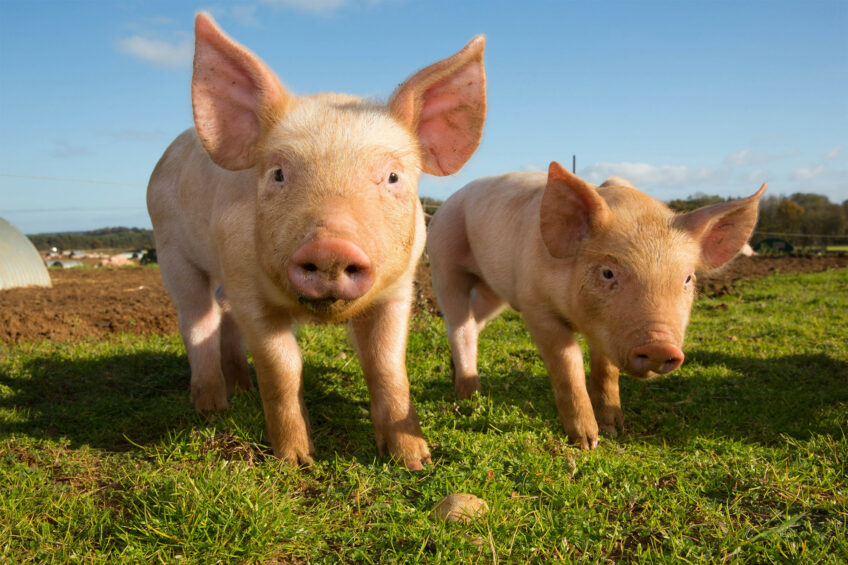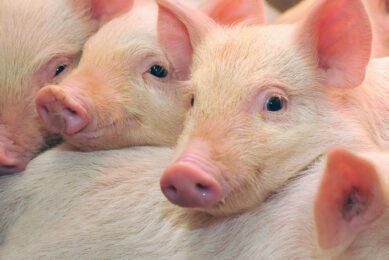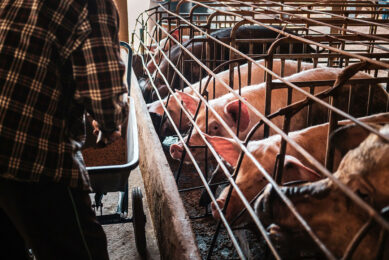Impact of feed-borne pathogens on sow productivity: Key challenges and solutions

In commercial swine production, the productivity of sows is a critical factor that directly influences the success and profitability of the entire operation. However, feed-borne pathogens pose a significant threat to sow health, leading to decreased reproductive performance, increased mortality rates, and substantial economic losses. In this interview, Dr Francisco Domingues, Anitox Technical Director of Global Swine Markets, discusses the key challenges posed by these pathogens, their impact on sow productivity, and the best strategies for mitigating these risks to ensure a healthy and productive herd.
What specific types of feed-borne pathogens are most commonly associated with reduced sow productivity in commercial swine operations?
Dr Francisco Domingues: In commercial swine operations, the most common pathogens linked to reduced sow productivity are primarily viruses like Porcine Reproductive and Respiratory Syndrome (PRRS) and Porcine Epidemic Diarrhoea (PED). These pathogens are notorious for causing severe performance losses across farms, especially during outbreaks. The effects can be devastating, leading to pregnancy losses, abortions, high piglet mortality, increased sow mortality rates and overall poor reproductive performance.

Furthermore, the financial impact is substantial. According to data from Iowa State University (ISU), PRRS in the U.S. alone results in an estimated USD$380 million in annual losses within the breeding herd, with total losses, including those from growing pigs, reaching around USD$1.2 billion annually, underscoring a critical need for robust pathogen control measures in swine production.
How do feed source pathogens influence reproductive performance and litter outcomes in sows, including fertility rates and piglet survival?
The detrimental effects of swine viruses like PRRS and PED on reproductive performance are well-documented. These pathogens are capable of breaching biosecurity measures, often with contaminated feed acting as a vehicle for transmission. Reports of feed-based transmission have become more frequent in the last few years furthering the industry’s understanding of feed as a fomite for viral pathogens.
When pathogens infiltrate a sow herd via feed, they can wreak havoc on reproductive outcomes. Fertility rates can plummet and piglet survival rates can be severely compromised. Understanding all potential sources of infection, including contaminated feed, is crucial. By enhancing biosecurity measures and being vigilant about feed contamination risks, producers can better protect their herds from these harmful pathogens.
What are the key mechanisms by which feed-borne pathogens affect the overall health and longevity of sows in commercial settings?
Feed-borne pathogens are highly detrimental to sow health, often leading to widespread disease within a herd during outbreaks. This can include poor development of naïve gilts, which are future breeding stock. Gilts affected early on by pathogens typically experience stunted growth, which in turn compromises their performance and longevity during their reproductive lives.
The cumulative effect of repeated disease outbreaks is a significant decline in piglet throughput and overall individual sow performance. Therefore, minimising the frequency of disease outbreaks through effective biosecurity and feed hygiene practices is essential for boosting long-term herd performance and profitability. The fewer outbreaks a farm experiences, the better the overall productivity and economic outcomes.
How can contamination of feed sources with pathogens be minimised to protect sow productivity, and what are the best practices for feed hygiene in commercial swine production?
The key to preventing feed-borne pathogens from affecting sow productivity lies in robust biosecurity measures. It’s well understood how these pathogens harm herds, but identifying and addressing the various ways they can infiltrate systems is critical.
Improving biosecurity around feed ingredients and the feed mill is essential. This includes implementing feed sanitisers to maintain high feed hygiene standards. Many producers rely on pelleting processes to mitigate swine pathogens, but the effectiveness of heat treatment can vary due to differences in pathogen thermos-resistance, equipment, temperature and retention time. This inconsistency makes it difficult to rely solely on pelleting as a preventive measure. In fact, recent research by Balestreri et al. (2024) has shown that heat treatment at 100°C for 60 minutes may not lower the virus levels in feed to below the minimum infection dose.
Additionally, there is the risk of feed recontamination after heat treatment, either in the feed mill or during transportation and handling before the feed reaches the feeder on the farm. For this reason, using a feed sanitiser with reliable residual activity is a more effective strategy to enhance biosecurity through feed in commercial swine operations.
What role does pathogen load in feed play in the transmission of diseases among sows, and how does this impact the economic efficiency of commercial swine production?
Recent publications have provided clear evidence of the risks associated with pathogen load in feed. It has been shown that various swine pathogens, including viruses, can survive in feed and, if ingested by pigs, can lead to infection and disease development.
Understanding the impact of feed-borne pathogens on piglet throughput, increased sow mortality, and overall poorer sow performance—particularly in operations experiencing consecutive disease outbreaks—highlights the significant negative impact on production costs and economic efficiency. These pathogens are not only a health concern but also a major financial burden on swine operations globally.
Addressing feed-borne pathogens through enhanced biosecurity, feed hygiene practices, and the use of effective feed sanitisers is critical to protecting sow productivity and ensuring the economic sustainability of commercial swine production. By minimising pathogen load in feed, producers can reduce the risk of disease transmission, safeguard the health and longevity of their sows, and ultimately improve their bottom line.




